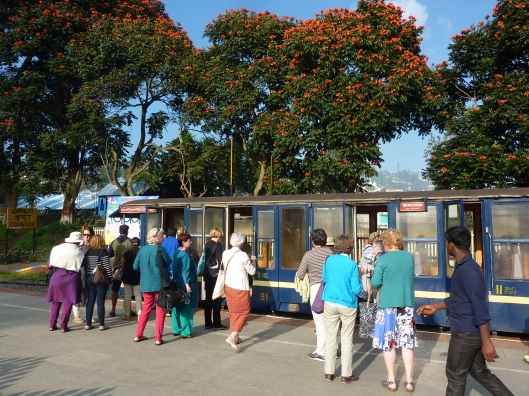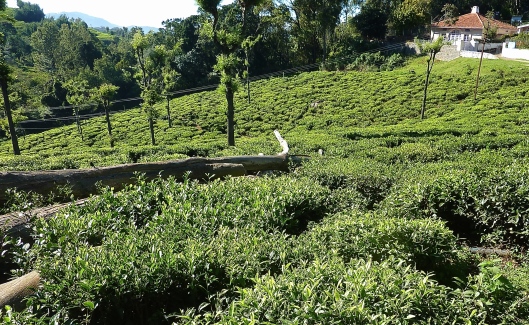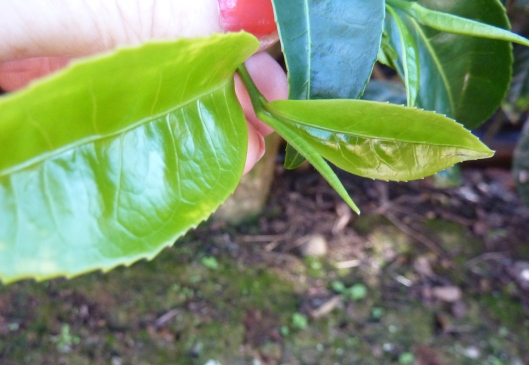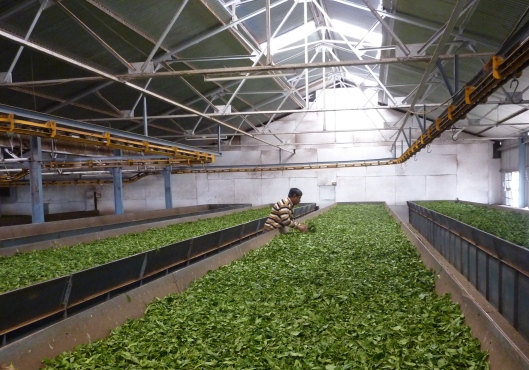December 3rd and 4th Our afternoon in Ooty included a ride on the UNESCO listed train from Conoor to Ooty. Originally the engine steamed 2300m up this mountain to bring British residents in India to an elevation where the summer temperatures are not so debilitating.

All aboard at Coonoor
I described this experience in detail last March and was rather sad that this time we did not observe the shunting manoeuvres in preparation for departure. However we had great fun trying to anticipate and photograph the red and the green flags used to signal from the front to the back of the train.

Flag signals
We ascended gently up the final lap of this amazing train track, arriving at Ooty to be greeted with an orgy of cheers from the waiting passengers. Some felt the effects of altitude but that did not prevent another skirmish into local shops – we are increasingly eagle-eyed for bargains and gifts and of course the collective approval of fellow travellers assists the decision process. Next morning we made an early stop in Conoor to visit the Highfield Tea Plantation. Our tour began beside a tea bush where our guide explained that in fact it grows to be a considerable tree unless trimmed into a bush and that it has a life of 100 years.

View of the tea plantation
This plantation supplies tea only for export (mostly Pakistan and China) and they concentrate on four varieties, Green tea, White Tea, Black Tea and a variety of flavoured teas including masala tea, ginger tea and chocolate tea. The specialty of Ooty is the blending of chocolate teas. The pickers take the top sprig with three leaves on it; the central fine bud is used for white tea, the small leaf for green tea and the fully mature leaf for black teas – breakfast tea, orange pekoe tea; masala tea uses a blend of all three leaves. The fine bud is specifically harvested every three months for the white tea while the other leaves are picked every 15 days.

Three tea leaves – each for a different purpose
The pickers bring their daily harvest to the factory and the leaves are then dried for 8 hours. They are then transferred to the cutting machine before passing five times through the oxidation process and then over the furnace – different temperatures for different teas – before the tea is finally put into sacks for export.

Drying beds for fresh tea leaves
There is so much I am not describing. Given that we have three meals a day there should be far more accounts of the delicious food. We are all astounded at the variety of the ingredients and the delicacy of the combinations. The word ‘spicy’ no longer has a narrow connotation and we are increasingly confident to explore the options. The vegetarian delicacies are particularly creative and never boring. Today we stopped in Coimbatore for a vegetarian lunch South Indian style. Tali comes on a stainless steel circular tray with a variety of tastes around a portion of rice and a couple of Indian bread options. The final bill for 15 of us including drinks and the tip was £25!

The TraditionalSouth Indian Tali
But pictures cannot convey the culinary delights – you must come and taste for yourselves.
